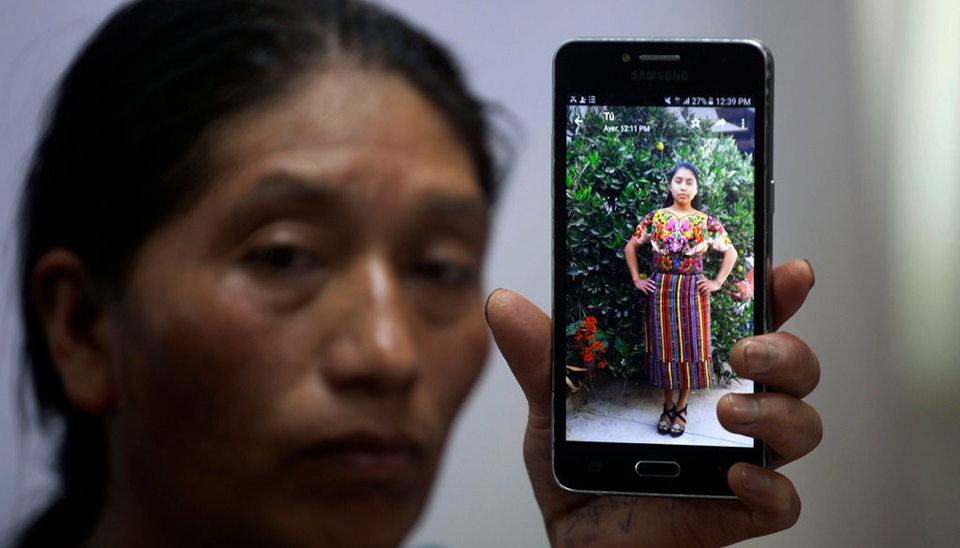
On May 23, a 19-year-old Guatemalan indigenous woman, Claudia Patricia Gómez González, was shot dead by a U.S. Border Patrol agent in the 97 percent Latino town of Rio Bravo, Texas. She had come to the United States without papers because there was no way for her or her family to advance economically in her home country. She wanted to study here so that she could get a degree and help her people.
The Border Patrol originally said that their officer fired in defense against immigrants who were assaulting them but subsequently backed off that claim. The matter, now “being investigated,” is one of many such incidents of violence against immigrants and refugees in recent years.
This incident adds to a mounting sense of horror and disgust in the United States and worldwide at the direction that U.S. immigration policy, never as kind and gentle as some claim, has taken under the presidency of Donald Trump. But to get the full picture, it is necessary to understand what’s going on in the countries from which most immigrants crossing the U.S. southern border come.
Guatemala: From conquest to reform and back again
Ms. Gómez came from the indigenous village of San Juan Ostuncalco in the Quetzaltenango department in Western Guatemala. She belonged to the Mam indigenous ethnic group, whose language is part of the Mayance (Maya) family of Native American languages. Many of the Mam people do not speak Spanish and the majority are extremely poor rural folk. This is true of other indigenous groups in Guatemala as well, yet by some ways of counting, half or more Guatemala’s population is indigenous. Between 40 and 60 percent of the population of Guatemala speaks an indigenous language as their first tongue.
In ancient times, and up to the Spanish conquest in the 16th century, the Mayan people had built prosperous and impressive city states not only in Guatemala, but also in Southern Mexico and neighboring regions of Honduras.
But the Spanish conquest destroyed all this. Those indigenous populations that survived colonial genocide were submitted to a regime of inequality and exploitation. “Liberal reforms” in the 19th and early 20th centuries only made the situation worse. Indigenous communities, in many cases, lost what little agricultural land they had left, and were forced into a situation of dependency on large landowners. On top of this, Guatemalans found themselves under the heel of one bizarre and violent right-wing dictator after another. Generally, these dictatorial regimes were allied with the United States, and protected U.S. investments in the country while oppressing the descendants of the original inhabitants.
From the early 1900s on, the U.S.-based United Fruit Company had massive investments in Guatemala, and consequently a disproportionate influence over the country’s political life. Under dictators such as Miguel Estrada Cabrera (president from 1898 to 1924) and Jorge Ubico Castañeda (1931 to 1944), the Guatemalan military often acted as enforcers of the interests of United Fruit, and the U.S. government had no problem at all with this arrangement.
Things began to change in 1945 after Ubico had been pushed out and an actual election chose a centrist politician, Juan José Arévalo Bermejo, as president. Arévalo instituted some modest reforms, but real change seemed to be in the offing when he was succeeded by his Minister of Defense, Jacobo Árbenz Guzmán, in 1945.
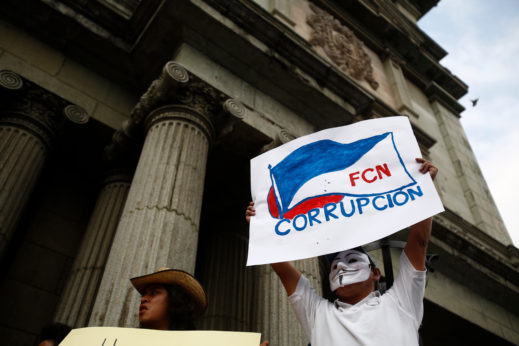
Árbenz, who had friendly relations with the Communist Party of Guatemala, which up to that point had been banned, laid out a plan of much more radical labor and land reforms. In particular, he wanted to redistribute some of the vast landholdings of United Fruit to poor Guatemalan farmers. This did not sit well with United Fruit, of course, and nor was it acceptable to the Truman and, subsequently Eisenhower administrations in the United States. Eisenhower’s Secretary of State, John Foster Dulles and his brother, CIA head Allen Dulles, both had connections with United Fruit; the latter had been a member of its board at one point.
Using McCarthy-era attacks on the “communist” connections of Árbenz and his government as a pretext, the CIA organized a “rebellion” of God-fearing army officers which succeeded in throwing Árbenz out and replacing him with Colonel Carlos Castillo Armas, a CIA operative and right-wing military officer.
Not satisfied with mere “regime change,” to use today’s phrase, the U.S. government urged Castillo Armas to carry out mass executions of Árbenz supporters, though Árbenz and his family managed to escape to exile.
Thus began once more the dreary cycle of outrageously repressive military rulers alternating with corrupt civilian regimes. All efforts to help the indigenous farmers, like the ones in San Juan Ostuncalco, were crushed. Starting in 1960, this led to a civil war in which more than 200,000 Guatemalans, mostly civilians targeted by the military and its allies, were slaughtered. Up to 83 percent of the dead were indigenous Guatemalans, like Claudia Gómez and her family members.
The U.S.’ comprador collaborators
It is important for all who live, work, pay taxes, and vote in the United States to know that from the first, the United States government was complicit in what is rightly called the Guatemalan genocide. Not only did our government fail to denounce the repression, but it trained some of the worst offenders and funded the repressive actions, in spite of repeated exposés and denunciations in the U.S. and worldwide.
A peace agreement formally ending the Guatemalan civil war was signed in 1996, but inequality, repression, racism against the huge indigenous population, and unhealthy military involvement in government and elections are still prevalent. In Guatemala, the military officers’ cliques are not only linked to acts of repression, but to serious corruption issues also.
The current president, Jimmy Morales, came to power in January 2016 as the result of the conviction and jailing for corruption of his predecessor, U.S.-trained Otto Pérez Molina. Morales is an Evangelical Christian and a former TV comedian whose rise to power can be attributed to some of the same military forces that backed previous dictatorships. Now, like Molina, he’s in trouble, too. He, his brother, and one of his sons are accused of corruption, and the latter two have been arrested.
In response, Morales has lashed out in various directions. One has been to threaten military action against the small neighboring country of Belize, with which Guatemala has had a long territorial dispute. Another is to attack the main institution that has been trying, with some success, to combat corruption in Guatemala, the International Commission Against Impunity in Guatemala (CICIG). The body was set up in a 2006 agreement between the United Nations and Guatemala and has worked with local prosecutorial and police officials to root out corruption since then. Morales now wants it disbanded, and the right wing, both in Guatemala and beyond, is baying for its blood.
What is the U.S.’ role? As CICIG is an entity set up partly by the United Nations, the U.S. funds part of its work, as do Sweden and the European Union. Now one of our own far-right politicians, Florida Republican Sen. Marco Rubio, has jumped into the Guatemalan situation and managed to at least temporarily block the U.S. funds for CICIG. Why? “Russian interference” in Guatemala’s internal affairs.
It appears that some Russian citizens—Igor, Irina, and Anastasia Bitkov—were arrested in 2015 as a result of CICIG’s investigations of corruption in the Guatemalan immigration office, and so The Wall Street Journal and Rubio have jumped to the conclusion that sinister Russian government forces must be behind the matter.
At the same time, Morales expelled the Swedish Ambassador to Guatemala for criticizing corruption in the country, and has replaced the former courageous attorney general, Thelma Aldana, with an inexperienced new figure with no record fighting corruption.
Meanwhile, refugees flow north
Meanwhile, Guatemalan indigenous and poor people continue to suffer from extreme poverty and violence both from criminal groups and from security forces. This is the reason they continue to come to the United States.
Also, the persecution of such people by the Trump administration continues to worsen. While our government keeps propping up right-wing states in Guatemala, in neighboring Honduras, and other countries, it at the same time increases the pressure on people fleeing the situations that its own policies create.
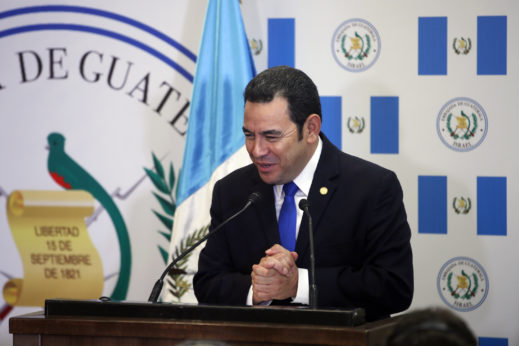
The Trump administration has announced that it will prosecute anybody who crosses the U.S. border without authorization, even if they have a credible case for seeking asylum. Border crossers, even those who can make a good case for asylum, will be separated from their minor children, who will be kept in separate custody—in prison, essentially. Parents who try to pick up their children from custody will be fingerprinted, a serious threat to those who might themselves be undocumented.
It gets worse. Trump just appointed Ronald Mortensen as Assistant Secretary of State for Population, Refugees, and Migration. In other words, this individual will now have great power and influence over the way immigrants and refugees are treated in this country. Mortensen is a senior fellow the Center for Immigration Studies, an extreme right-wing “research” organization whose “studies” are a mainstay of some of the most extreme anti-immigrant and racist demagogues in the country. (The Mortensen appointment has to be approved by the Senate).
And Trump, Attorney General Jeff Sessions, and other figures in the administration continue to spread lies about immigrants and refugees as inveterate criminals, all evidence to the contrary.
There are ongoing protests about the murder of Claudia Gómez, and about the Trump policy of torturing children as a means for punishing their parents for trying to come to “the land of the free and the home of the brave.” Republican Party politicians also continue to use racist anti-immigrant propaganda in their campaign literature and speeches.
The midterm elections in November will literally be a life and death matter for millions of immigrants and their families in this country.



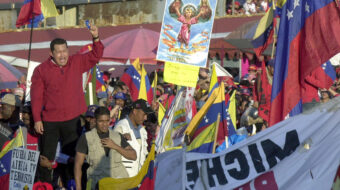
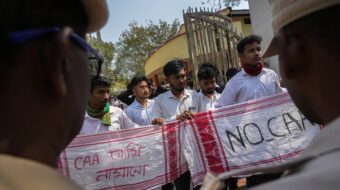
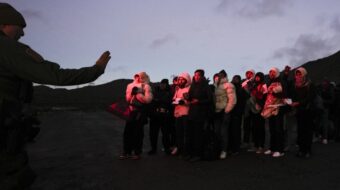






Comments